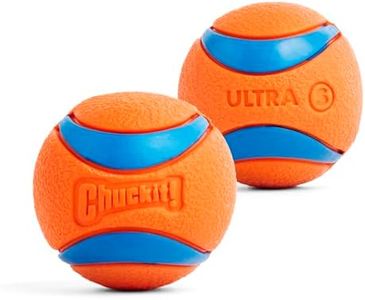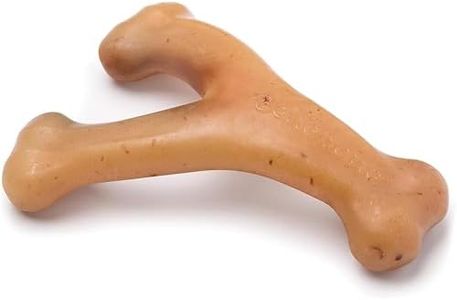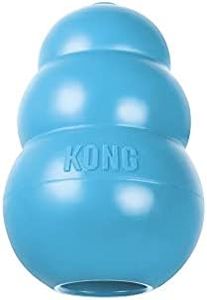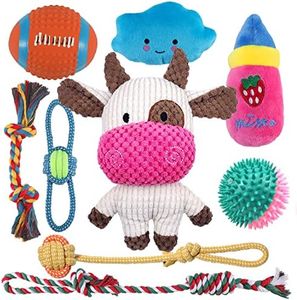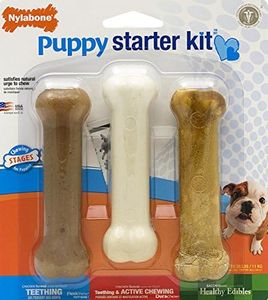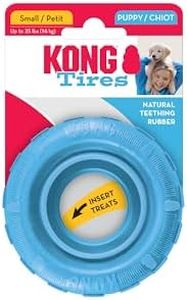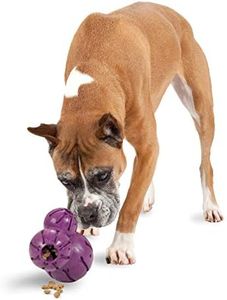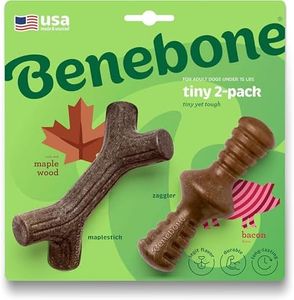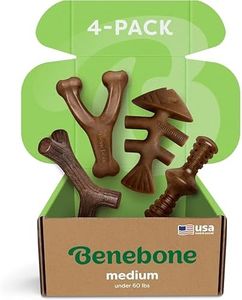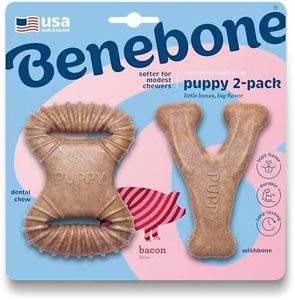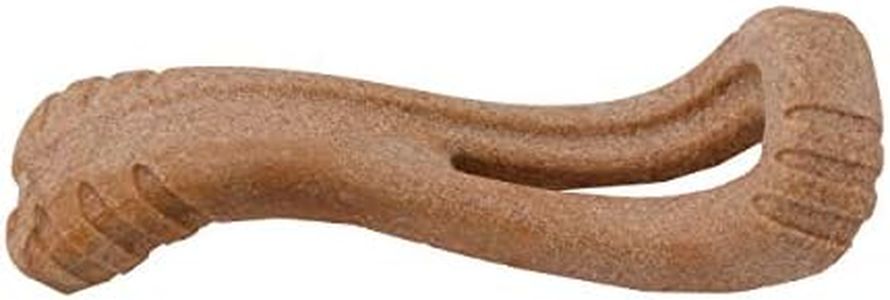We Use CookiesWe use cookies to enhance the security, performance,
functionality and for analytical and promotional activities. By continuing to browse this site you
are agreeing to our privacy policy
10 Best Puppy Chew Toys
From leading brands and best sellers available on the web.Buying Guide for the Best Puppy Chew Toys
Choosing the right chew toy for your puppy is essential for their health, development, and safety. Puppies have natural chewing instincts, especially while teething, and the right toy can help relieve discomfort, promote healthy chewing habits, and keep them engaged. The key to finding the perfect chew toy is understanding your puppy’s chewing style, their age, and their safety needs. Always supervise your puppy with new toys to ensure they are safe and gradually learn which types work best for their unique personality.MaterialMaterial refers to what the chew toy is made from, such as rubber, nylon, plush, or rope. This is important because certain materials are more durable and safer for puppies, whose teeth and jaws are still developing. Softer rubber is often best for teething, while nylon is suited for heavier chewers. Plush toys might be ideal for gentle chewers or comfort, but they’re not great for aggressive chewers, as they can be easily torn apart. When choosing a material, think about your puppy’s chew strength: gentle chewers can have softer toys, but if your pup tends to destroy toys quickly, look for hardier, non-toxic rubber or nylon options.
SizeSize is how big or small the toy is compared to your puppy’s mouth and body. This is important because toys that are too small can be a choking hazard, while ones that are too big may be difficult or unappealing for a puppy to use. Toy sizes are usually segmented as small, medium, or large. Smaller breeds or very young puppies need small to medium toys they can easily carry and chew, while larger breeds may need bigger ones. Always match the toy size to your puppy’s current size and check manufacturer guidelines if you’re unsure.
DurabilityDurability describes how well a toy can withstand repeated chewing. This is important because puppies, especially strong chewers, can quickly destroy weaker toys, possibly ingesting bits that are unsafe. Toys are typically categorized as soft, moderate, or tough durability. Light chewers and very young puppies do well with softer toys, while heavy chewers need toys labeled as tough or indestructible. Observe how your puppy handles their toys and choose a durability level based on how quickly they typically wear out or break their toys.
SafetySafety refers to how well a toy avoids choking hazards, toxic materials, or sharp edges. Since puppies love to explore with their mouths, safe construction is very important. Toys meant for puppies often have rounded edges, are made from non-toxic materials, and are free from small pieces that could break off. The best guide here is to examine the toy visually, avoid anything with detachable parts or questionable quality, and always supervise your puppy during play, especially with new or unfamiliar toys.
TextureTexture is how the surface of the chew toy feels: smooth, ridged, knobby, or soft. Different textures can help soothe sore gums, clean teeth, and keep puppies interested in the toy. Some puppies prefer soft, squishy toys, while others like rougher or more complex surfaces that massage their gums. It can help to have a variety of textures on hand and see which your puppy enjoys and benefits from most, especially during teething stages.
Interactive FeaturesInteractive features include things like squeakers, treat-dispensing designs, or toys that move in unexpected ways. These features encourage play, mental stimulation, and keep puppies engaged longer. Some puppies are motivated by squeaks and sounds, while others love toys they can chase or those that reward them with treats. Consider your puppy’s play style – if they get bored easily, opt for toys with more interactive features, but if your puppy is more relaxed, simpler designs might suffice.

